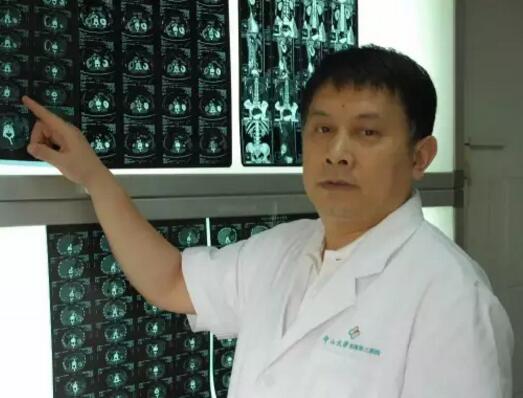目的 探讨“刚柔精准穿刺法”在超声引导经皮肾镜术中的穿刺特点及应用价值。方法 回顾性分析2013 年12 月至2015 年12 月352 例在武汉市普仁医院泌尿外科行经皮肾镜术的患者资料,通过术前泌尿系CT 三维重建及腹部平片(KUB)检查,明确肾盂、肾盏结构及结石分布情况,并术前常规超声验证,进而设计最佳穿刺路径,术中采用“刚柔精准穿刺法”超声引导定位穿刺,建立16~20 F 通道,使用12.5 F 微创肾镜,腔内采用气压弹道联合60 W 科医人钬激光碎石,手术结束前再次超声检查结石残留情况,如平行盏有明显结石残留则采用针刺辅助或多通道取石。患者年龄21~80 岁,平均(44±10)岁,单发结石79 例,单侧多发结石212 例,鹿角形结石61 例;结石长径1.6~5.7 cm,平均为(2.4±0.5)cm。 结果 本组352 例患者全部精确穿刺预定目标肾盏穹窿成功,建立通道满意,1 例因术中发现肾盂积脓仅留置肾造瘘管改II 期取石,I 期双通道取石16 例,II 期原通道取石7 例。超声引导穿刺第1 针穿刺成功率97.7%(344/352),第2 针穿刺成功率100%,穿刺时间1.0~3.0 min,平均(1.1±0.4) min,通道建立时间2.0~5.0 min,平均(3.1±1.0) min,手术时间10~80 min,平均(32±12) min。本组未出现血气胸、肝脾肠管损伤等手术并发症,输血3 例(0.85%),术后延迟出血2 例(0.57%),均予卧床休息及高蛋白饮食1 周内恢复。术后3~4 d 复查KUB 平片,I 期结石清除率:单发结石100%(79/79);多发结石91.5%(194/212);鹿角形结石81.9%(50/61);总体91.8%(323/352)。结论 术中在超声引导下“刚柔精准穿刺法”可实现精准穿刺,值得临床推广应用。
Objective To evaluate the characteristics and application value of "rigid and flexible precision puncture" in ultrasound-guided percutaneous nephrolithotripsy. Methods A total of 352 patients who underwent percutaneous nephrolithotripsy in the Department of Urology, Wuhan Puren Hospital between December 2013 and December 2015 were analyzed retrospectively. Their pelvis, renal calyx structure and distribution of calculi were identified using three-dimensional reconstruction of CT and abdominal plain film (KUB) examination before operation, and verified using preoperative routine ultrasound, so as to design the best puncture path. During operation,"rigid and flexible precision puncture" was performed under the guidance of ultrasound, and 16 ~ 20 F channels were established; 12.5 F minimally invasive nephroscope was used, and pneumatic lithotripsy combined with 60 W holmium laser lithotripsy was used in the cavity. Before the end of operation, residual calculi were verified using ultrasound; acupuncture assisted or multi-channel calculi extraction should be performed in the case of obvious residual calculiat parallel calyx. The patients aged from 21~80 years, with an average age of (44±10) years old. There were 79 cases of solitary calculi, 212 cases of unilateral multiple calculi and 61 cases of staghorn calculi, with a diameter of 1.6~5.7 cm and an average of (2.4±0.5) cm. Results For the 352 patients, precision puncture was performed to predeter mine target calyceal fornix successfully, and satisfactory channels were established. One patient presented pyonephrosis; only renal stoma catheter was indwelled for phase II nephrolithotripsy.Sixteen patients underwent phase I dual-channel nephrolithotripsy, and 7 patients underwent phase I primary channel nephrolithotripsy. Success rate of the first ultrasound-guided puncture was up to 97.7% (344/352), and that of the second puncture reached 100%.The length of puncture was 1.0 ~ 3.0 min, with an average of (1.1±0.4) min; the channel establishment time was 2.0 ~ 5.0 min, with an average of (3.1±1.0) min, and the length of operation was 10~80 min, with an average of (32±12) min. No postoperative complications such as pneumothorax, liver, spleen and intestinal canal injury occurred. Three patients (0.85%) received blood transfusion, and 2 patients (0.57%) presented postoperative delayed bleeding, all of who recovered after treated with bed rest and high-protein diet for 1 week. KUB plain film was performed on 3~4 d after operation, and the calculi clearance rate in phase I was: 100% (79/79) for solitary calculi, 91.5% (194/212) for multiple calculi and 81.9% (50/61) for staghorn calculi, with an overall clearance rate of 91.8% (323/352). Conclusion The ultrasound-guided "rigid and flexible precision puncture" can achieve precision punctureduring operation, and it is worthy of clinical application.


